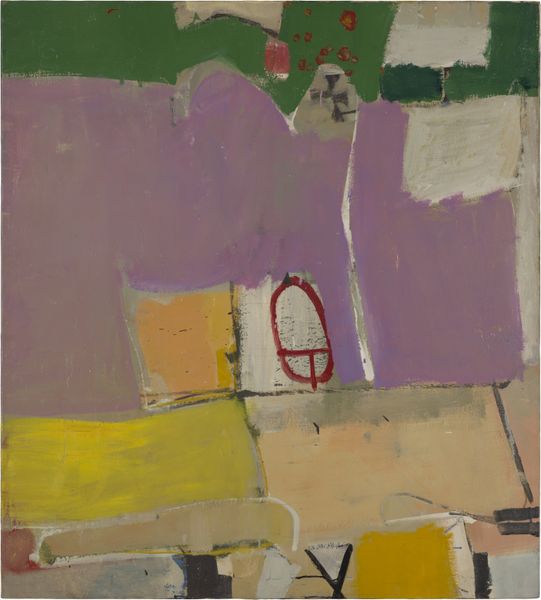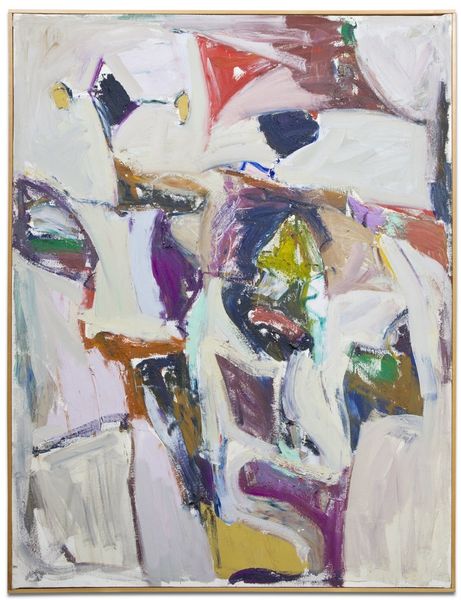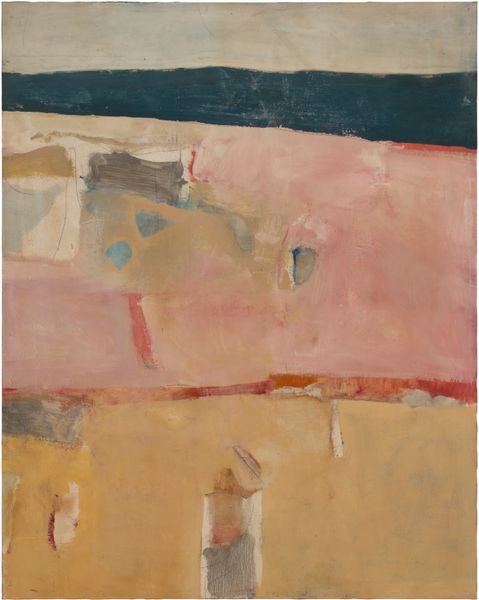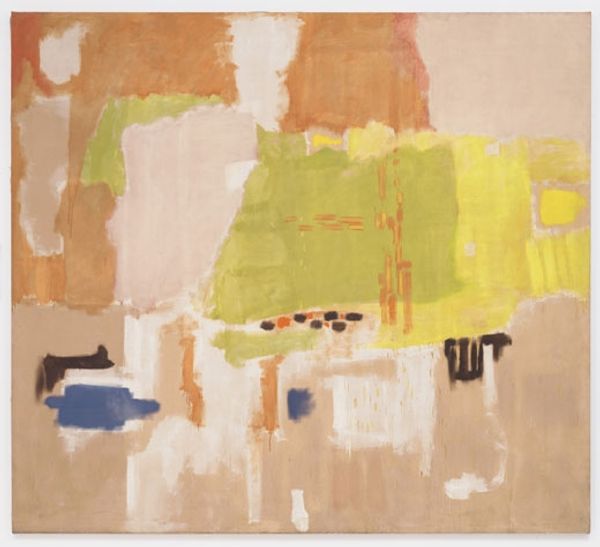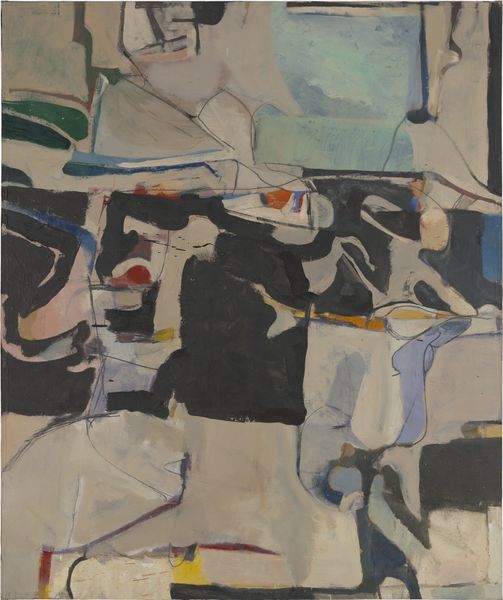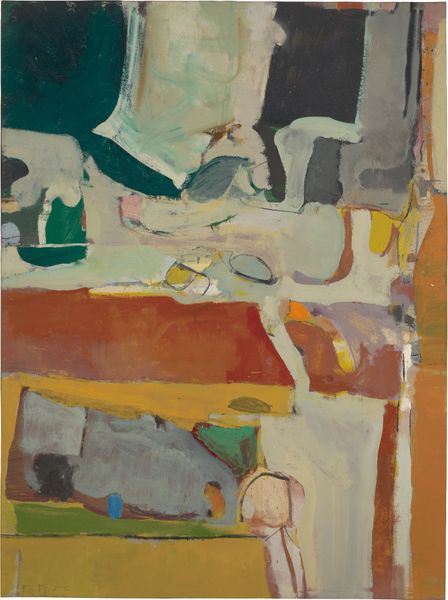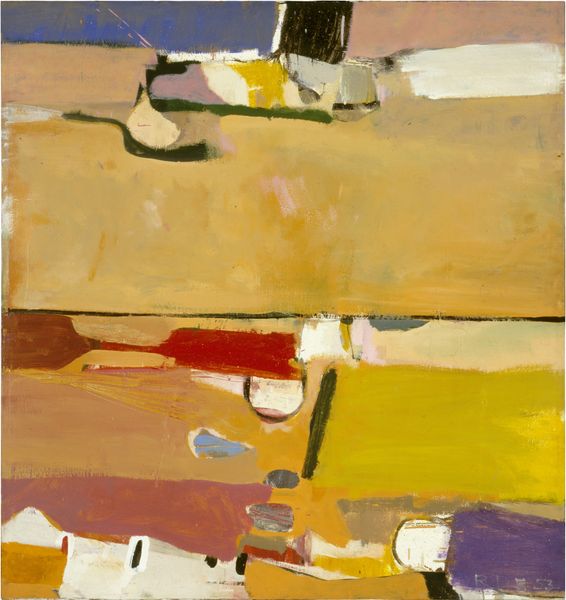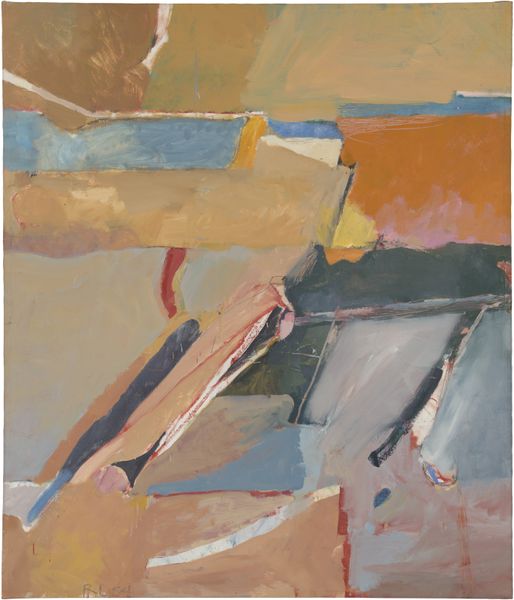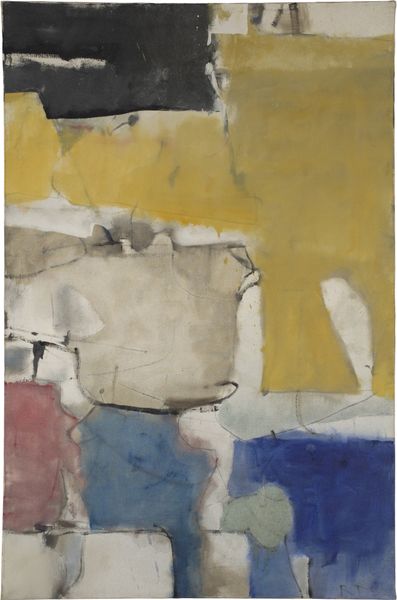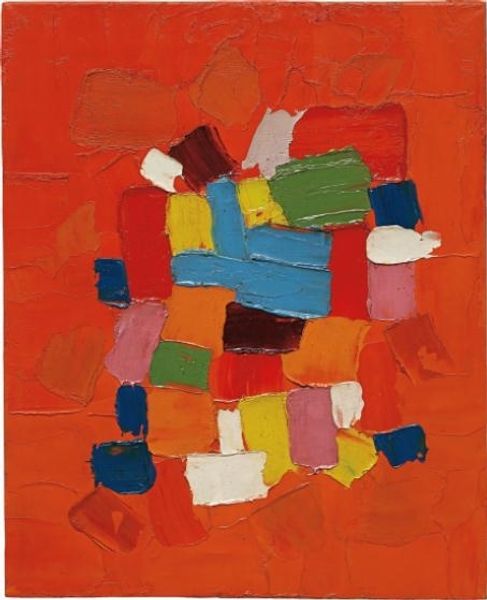
painting, acrylic-paint
#
abstract-expressionism
#
abstract painting
#
water colours
#
painting
#
colour-field-painting
#
acrylic-paint
#
bay-area-figurative-movement
#
acrylic on canvas
#
abstraction
#
painting art
#
modernism
#
watercolor
Dimensions: 156.2 x 121.3 cm
Copyright: Richard Diebenkorn Foundation
Curator: Richard Diebenkorn’s “Urbana,” an acrylic on canvas created in 1953, is a captivating example of abstract expressionism. At first glance, what strikes you most? Editor: Pure sunshine filtered through candy glass. Seriously! It’s so vibrant, but… controlled, somehow. The blocks of colour are jostling, but not fighting. Like urban zoning, maybe? Hence the title? Curator: Precisely! The name “Urbana” itself hints at the painting’s conceptual underpinning, linking the composition to ideas of urban landscapes. Diebenkorn, like many artists of his generation, grappled with ways to visually represent modern experience, drawing from a psychological understanding of space and place. What emotional or cultural resonance does this resonate for you? Editor: There’s a definite nostalgia. These colours, those almost map-like shapes...it takes me back to the feel of mid-century modern design, but in a more freewheeling, less rigid way. Like a daydream about city planning! Does that make sense? Curator: It does. Note the recurring use of certain colours – that specific shade of rosy pink, the cool, almost watery blue. In color theory, pink often conveys emotions of playfulness, romance, but also something childlike and even vulnerable, so what about in this context? What of the blue? Editor: Juxtaposed with the orange, it feels sophisticated, definitely modern. That interplay is what elevates it beyond just being ‘pretty’ colors, I think. It makes me wonder if those hues represent key memories, people, or places from Diebenkorn’s own urban experiences? Curator: Perhaps a record of an emotive map of personal spaces. As for artistic references, “Urbana” reflects a distinct move away from earlier abstract expressionist conventions by featuring solid, distinct patches of colour, it's part of a trajectory to colour-field painting. Diebenkorn's legacy involves his capacity to make viewers question and see the world uniquely through his symbolic representation of everyday themes. Editor: I get that feeling now! I love how he transforms simple shapes and colours into this almost living, breathing landscape. It has this uncanny effect to be familiar, almost homely, even though its total abstract. Thanks for showing me to see a great, yet unique perspective! Curator: My pleasure! It is just this rich potential that makes engaging with symbols in art so enduring.
Comments
No comments
Be the first to comment and join the conversation on the ultimate creative platform.
